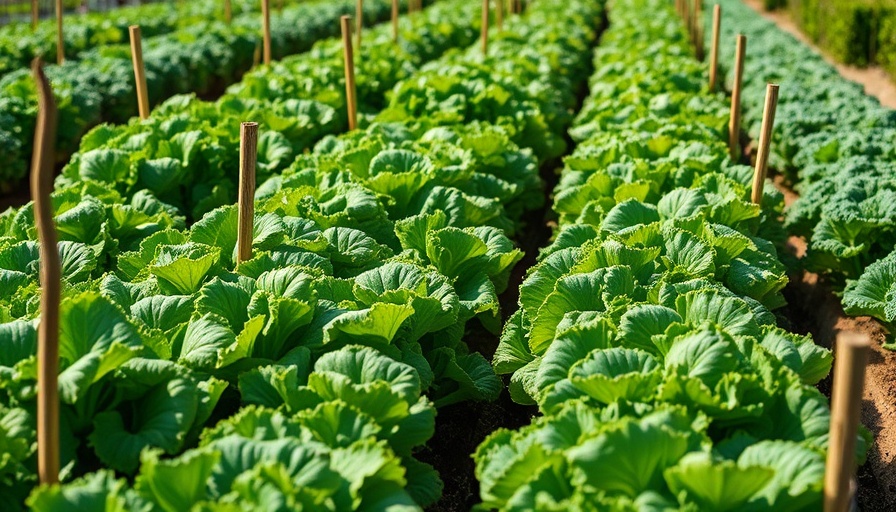
Unlocking the Secrets: Understanding Succession Planting
Succession planting, a technique cherished by seasoned gardeners, is about spacing out your vegetable harvests to enjoy fresh produce all season long. This approach allows you to plant vegetables in a staggered manner, ensuring continuous growth even in limited garden spaces. Rather than facing a feast one week and famine the next, gardeners can reap the benefits of varied harvests by sowing seedlings at different times, creating a sustainable cycle of freshness.
Extend Your Harvest Season with Smart Timing
One of the great joys of gardening is watching your efforts blossom into something rewarding. But too often, inexperienced gardeners plant everything all at once—only to be overwhelmed by a sudden, massive influx of vegetables. They learn the hard way that the best results come from staggering their plantings. For instance, consider radishes; these fast-growing gems can be sown every two weeks for a continuous supply from early spring through to late summer. This method not only maximizes yield but also reduces waste by promoting manageable amounts of harvest at any given time.
Seasonable Planting: Choosing the Right Crops
Different vegetables thrive during different seasons, so knowing which ones to plant and when is vital. Cool-season vegetables like spinach and lettuce can be planted in the early spring, quickly harvested, and then replaced with warm-season varieties like tomatoes and peppers as the temperatures rise. By adopting this rotation, you ensure your garden is never bare and that each plot serves a purpose throughout the growing season.
Pro Tips to Enhance Your Vegetable Gardening Experience
Begin your succession planting journey with a few easy-to-grow vegetables. Vegetables such as beans, peas, and carrots are perfect candidates to test this growing method. They not only provide a delightful variety but also help in understanding the timing and growth requirements needed for success. Additionally, starting your warm-season crops indoors can give them a jumpstart, so they’re ready to transplant when the time is right.
Creative Solutions for Urban and Small Space Gardening
Urban gardeners are often faced with the challenge of limited space. However, succession planting serves as a brilliant solution! Consider using raised beds or vertical gardening to maximize your yield while maintaining a compact layout. This method also helps in addressing space constraints often found in urban settings, allowing you to enjoy various vegetables right from your own balcony or backyard.
Dealing with Gardening Challenges: Pest Control and Plant Health
Like any gardener, you may encounter pests and diseases threatening your carefully planted crops. Implementing crop rotation and companion planting—where beneficial plants are placed next to vulnerable ones—can deter pests and promote plant health. Always keep a watchful eye on your plants, and don't hesitate to remove any diseased foliage promptly. Using organic pest control methods can keep your gardening venture effective and sustainable.
Concluding Thoughts: Embrace the Art of Succession Planting
By understanding and utilizing succession planting, you unlock the potential for a bountiful and diverse harvest throughout the gardening season. This method ensures you’re not only enjoying the fruits (and vegetables) of your labor, but you’re also cultivating a well-rounded gardening experience. As you dive deeper into vegetable gardening, embrace the lessons that each season brings, and don’t hesitate to adjust your strategies based on what works best in your garden. Happy planting!
 Add Row
Add Row  Add
Add 




Write A Comment